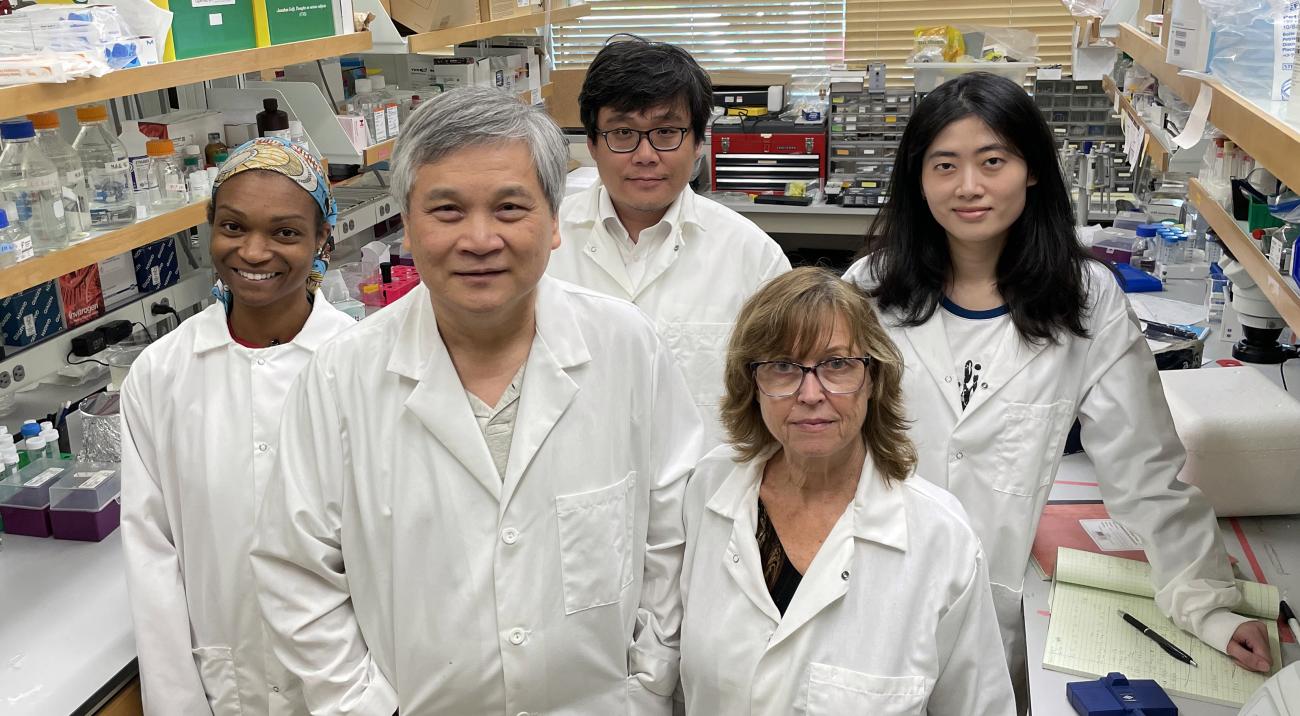Research team led by BME's Cheng Zhu probes the underlying mechanisms of PD-1 checkpoint inhibitor therapy
By Jerry Grillo
Programmed Cell Death-1, or PD-1, has become a headline-grabbing molecule best known for its role in cancer immunotherapies called checkpoint inhibitors.
A study from Georgia Tech and Emory University researchers is offering improved understanding of why these inhibitors work — and how to make them effectively fight cancer for more patients.
In a normal, healthy body, PD-1 is a receptor protein that serves as an important off-switch, or checkpoint. Found on a cell’s surface, it binds with a ligand — either PD-L1 or PD-L2 — on another cell surface. This interaction signals the immune systems’ T cells not to attack healthy cells. But sometimes, invading cancer cells also carry a ligand that will bind with PD-1, fooling the body’s immune system into calling off the attack when T cells are needed most.
PD-1 blockade therapy is a checkpoint inhibitor that blocks this signaling process, unleashing the full fury of T cells. Still, only 20% to 40% of patients receive clear benefits from this kind of immunotherapy.
Here’s the thing: Part of what remains unclear is how PD-1 initiates the stand-down order to T cells. Sometimes, ligands bind with PD-1 and don’t suppress T cell activity. So, solving the mystery of what else causes PD-1 to work as a checkpoint can open the door to more effective cancer therapies.
Wallace H. Coulter Department of Biomedical Engineering researcher Cheng Zhu and his collaborators may have found a key: physical force.
“Mechanical forces are an important but previously overlooked component of immunology in general, and specifically in PD-1 activity,” said Zhu, professor Regents' Professor and J. Erskine Love Jr. Chair. “They play a critical role in regulating immune responses.”
Zhu and his team presented their research in Nature Communications, demonstrating that PD-1 is not activated just through interacting or binding with ligands. These ligands must also be anchored to a surface, like a cell membrane, which enables T cells to exert small but measurable forces.
“We show that T cells exert force on this interaction between PD-1 and the ligand. Without that reactive force on the cancer cell ligand, PD-1 doesn’t function,” said Zhu, who is principal investigator of the Cellular and Molecular Biomechanics Lab.
And that means T cells can be fully armed and ready for the fight.
Measuring the Force
The recent study is a sequel to research Zhu’s team published in 2021 that explained PD-1’s suppressive role and its value in immunotherapy. This time, the researchers went deeper, identifying and measuring the physical force involved in PD-1’s function.
They used special tools called molecular tension probes and biomembrane force probes to evaluate the tiny physical force exerted by T cells and understand the connection between this molecular jostling and PD-1 activity.
On a solid cell membrane with the appropriate ligand (PD-L1 for example), T cells exert a force of 4.7 to 12 piconewtons. When the force applied was less than 7 piconewtons, the bond between PD-1 and the ligand got stronger and lasted longer. When the force was higher than 8, the bond weakened and broke more easily.
“If the force is too high, the bond breaks, and that weakens PD-1’s ability to stop T cells,” Zhu explained. “It’s a molecular balancing act, and the right amount of physical force makes all the difference.”
While they confirmed that T cells exert small forces on PD-1 attached to a surface-bound ligand, they also discovered that soluble PD-L1 ligands floating freely in the bloodstream lack the mechanical support needed to activate PD-1.
“This explains why soluble ligands don’t trigger T cell inhibition in the same way,” Zhu said.
Ultimately, the research showed that immune cells need physical as well as chemical cues to properly manage PD-1 activity, and even the tiniest show of force could play a role in our body’s ability to protect itself, against cancer and potentially other diseases.
“Next, we would like to test our in vitro findings in an in vivo setting, using animal models,” Zhu said.
CITATION: Kaitao Li, Paul Cardenas-Lizana, Jintian Lyu, Anna V. Kellner, Menglan Li, Peiwen Cong, Valencia E. Watson, Zhou Yuan, Eunseon Ahn, Larissa Doudy, Zhenhai Li, Khalid Salaita, Rafi Ahmed, Cheng Zhu. “Mechanical force regulates ligand binding and function of PD-1.” Nature Communications.
FUNDING: This research was supported by the National Science Foundation, grant No. MCA08X014, and the National Institutes of Health, grant Nos. R01CA243486, U01CA250040, U01CA250040S2, RM1GM145394, and F31CA243502. Any opinions, findings, and conclusions or recommendations expressed in this material are those of the authors and do not necessarily reflect the views of any funding agency.
Latest BME News
Jo honored for his impact on science and mentorship
The department rises to the top in biomedical engineering programs for undergraduate education.
Commercialization program in Coulter BME announces project teams who will receive support to get their research to market.
Courses in the Wallace H. Coulter Department of Biomedical Engineering are being reformatted to incorporate AI and machine learning so students are prepared for a data-driven biotech sector.
Influenced by her mother's journey in engineering, Sriya Surapaneni hopes to inspire other young women in the field.
Coulter BME Professor Earns Tenure, Eyes Future of Innovation in Health and Medicine
The grant will fund the development of cutting-edge technology that could detect colorectal cancer through a simple breath test
The surgical support device landed Coulter BME its 4th consecutive win for the College of Engineering competition.








